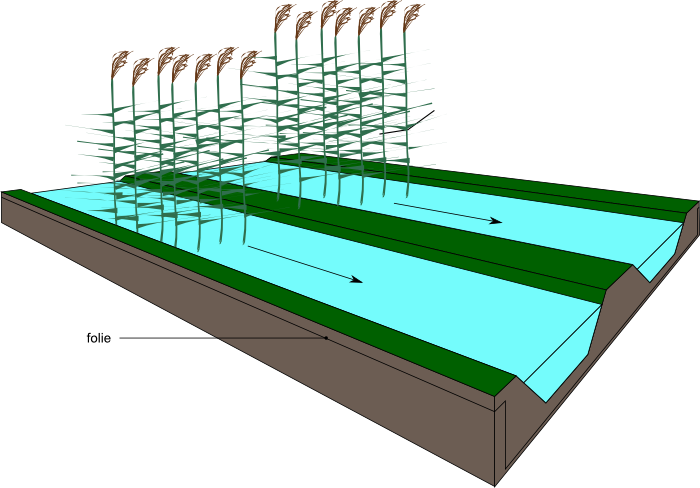The surface flow wetland is the oldest type of reed bed. A characteristic of the surface flow system is that the waste water flows above ground, between the stems of the reed plants. The water is then purified by micro-organisms that live underwater, on the stems of the reed plants. In addition, there is also an exchange of substances between the water layer and the soil under the reed bed.
Often a surface flow wetland is constructed without a water proofing liner. This is possible in areas where the sub soil consists of clay. In that case it is a very simple and relatively cheap system. But it does have the disadvantage that it requires a lot of surface and is sensitive to frost. Because there is more or less open water in the surface flow system, it can also attract mosquitoes and cause some odor. That is why this system has become obsolete in recent decades when it comes to the direct treatment of waste water. However, the system still has applications, for example as post-treatment and in case, for example, nitrate has to be removed. For this type of appocations, a surface flow wetland is still a very interesting option. Rietland uses surface flow wetlands, among others, in manure processing.

Realization:
Jansen and Co (agro company)
Manure processing Leemans in Wortel,
Publication:
Warsco Genk (rainwater of pavement: collect, buffering, delayed discharge anddischarge + Purify and reuse wastewater from car wash)
